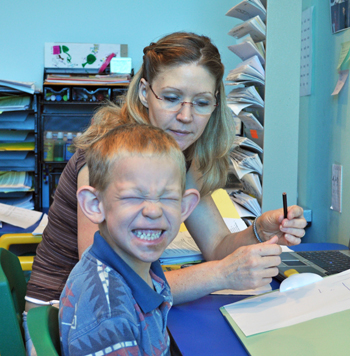
|
Pediatric Occupational, Physical, ABA/Behavioral, Feeding, Speech, and Language Therapies Main Clinic: 931-372-2567 1445 East 10th Street Cookeville, TN 38501 Email: [email protected] HIPAA Secure Email: [email protected] Fax: (931) 372-2572 ABA Clinic: 931-201-9534 400 Dubois Road Cookeville, TN 38501 Email: [email protected] Please call today to get started! Most insurances accepted! |

|
| Who needs therapy? | SE HABLA ESPAÑOL |
Home
>
General Information, Links, and Resources
> Calming Sensory Activities for Everyday Use
Calming Sensory Activities for Everyday Use
Quick List of Organizing Sensory Activities in Daily Schedules
Sensory input is a natural calming drug for the brain, we all need it to stay calm, focused, and feel put together.
But, children w/ Sensory Procesing Disorder need more of it & more often...this is why we call it a "Sensory Diet"
Examples of Everyday Activities that Provide Calming and Organizing Sensory Input:
- Vestibular: linear swinging or gently rocking back and forth, move n sit seat wedges when sitting, rocking, jumping, running, sports or aerobic activities. Move, Move, Move!
- Proprioceptive: wearing weighted vests, joint compressions, wheelbarrow walking, jumping, creeping and crawling, placing hands on shoulders and give firm pressure down into the seat, marching (Russian and British), chair push ups, elastic material around chair legs for bouncing feet while seated, carrying groceries, books, etc. and helping with chores.
- Vibration- vibration neck massagers, lower back massagers while seated, vibration oral toothbrushes, etc.
- Oral motor: chewing on gum, carrots, or other firm and crunchy snacks that are healthy. Water bottles at their desk can help with focus and organization. Bubbles are great!
- Calming spaces: it is very important that a child with SPD have a way out of an environment that causes them stress. Each classroom should have a quiet space in which there is minimal visual and auditory stimuli. A reading corner behind a bookshelf, under a table with pillows or bean bag chair, rocking chair in a corner behind a curtain, a small tent, or a hammock swing that only goes in a linear direction the classroom are great ways to provide a calming time. Vibration massage mats in a bean bag corner are wonderful calming spaces. Children will often choose these areas on their own, just make adaptions to make sure other children are not invading their quiet time. Let them have a way of telling you they need a break as well before a meltdown occurs.
- Posture: make sure that the desks and chairs are at the right height for each child, feet touching the floor all the way (not on toes), elbows resting comfortably on desk without humped shoulders, 90 degree rule for all joints.
Some children need inclined writing boards to help with posture, as well as the move and sit seat wedges, weighted vests, and proper pencil grips to stay seated and focused for harder fine motor and table top tasks.
- Motor planning: to help children with motor planning difficulties try to give short instructions with one step at a time, use other students to model and buddy with the student. Use multi sensory approach to teaching new skills: remember all senses when teaching. Remember the child's best learning sense, find what that is, and teach first with that sense!
- Use adaptions to worksheets such as limiting visual stimuli by using a black piece of paper to go under each line of work or reading, use graph paper for math, and only expose one or two lines at a time.
- Use the computer for skills that are very difficult, limit long writing times.
Site empowered by
WebOnTheFly